The 8 Best Places to See Wildlife in Canada
From whales to wolves, bears to moose, salmon to seabirds, the possibilities for animal-related adventures in Canada are limitless. Find out why this vast country is one of the world’s greatest wildlife destinations.
 Photo © iStock/wwing
Photo © iStock/wwing
Where should you go to see moose in Canada? How about bears or bald eagles? Here are some of Canada's best spots for wildlife spotting.
- Vancouver Island
- Mainland British Columbia
- Alberta
- Manitoba
- Ontario
- Maritime Quebec
- Bay of Fundy
- Newfoundland
- Wildlife Safety
Vancouver Island: whales, bears & snorkeling with salmon
Between Vancouver Island and mainland British Columbia lies the Johnstone Strait, renowned for its whales, including orcas, humpbacks, and minkes. Day-trips and excursions to see the whales operate from several island communities.
The Salish Sea, where Canada meets Washington state, is another great spot for orcas, with whale watching trips out of Victoria.
Campbell River is a jumping-off point for grizzly bear viewing in late summer/early fall. From mid-July through September there’s also the exhilarating opportunity to snorkel with thousands of salmon.
On the west coast, Tofino is a popular base for viewing whales, sea otters, sea lions, black bears, and more.
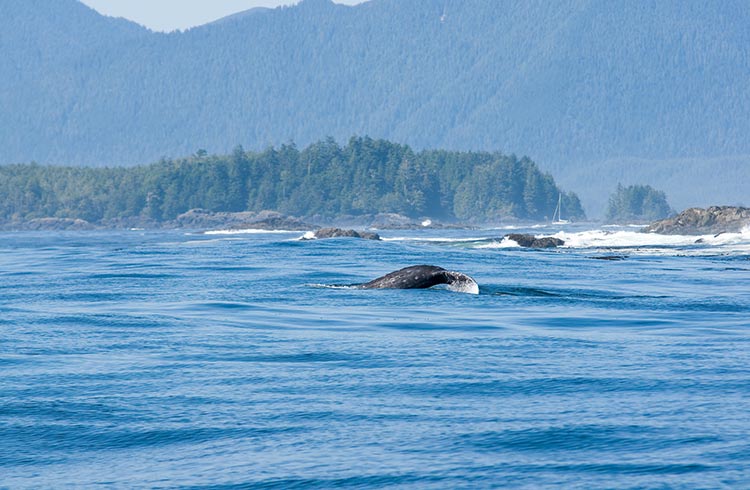
Mainland British Columbia: eagles & spirit bears
Squamish, north of Vancouver, attracts one of the world’s largest concentrations of bald eagles each winter. Float trips on the Cheakamus and Squamish Rivers are the best way to see them.
The remote Great Bear Rainforest offers a chance of sighting a spirit bear, a subspecies of black bear with a recessive gene that makes its fur cream-colored.
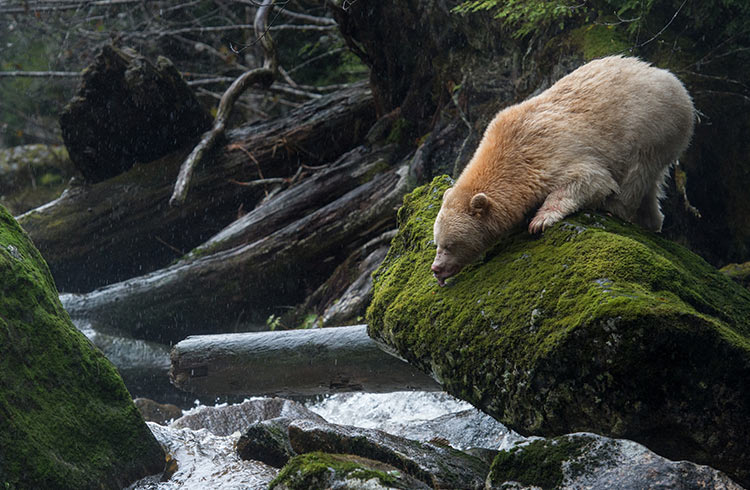
Alberta: bison, wolves & beavers
In the Canadian Rockies, Banff and Jasper National Parks provide plentiful opportunities to spot bears, moose, elk, bighorn sheep, mountain goats, and other wildlife.
Wood Buffalo National Park in northern Alberta is a huge wilderness famous for its 5,000 free-roaming wood bison. It’s also home to wolves, beavers, sandhill and whooping cranes, and much more.
A smaller, translocated bison herd can be seen at the more accessible Elk Island National Park, east of Edmonton.
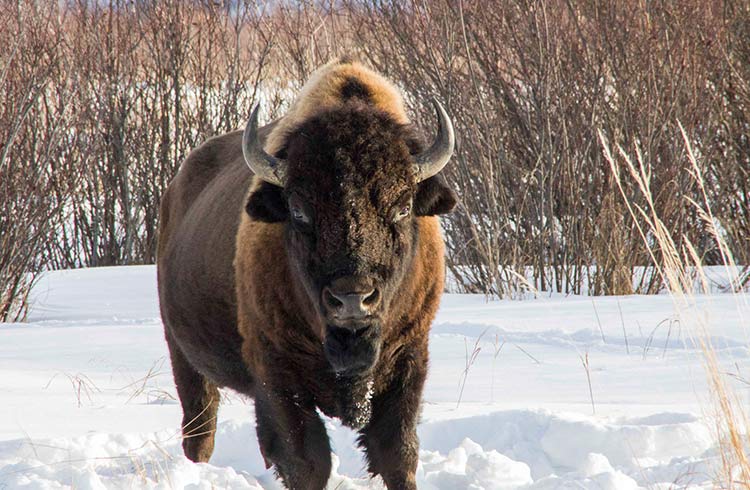
Manitoba: polar bears in Churchill
Churchill is famous for its polar bears, which gather along the Hudson Bay shoreline each autumn. Another reason to visit is to see thousands of beluga whales that throng the Churchill River estuary every summer.

Ontario: moose on the loose
Algonquin Provincial Park is one of Canada’s best places to see moose, particularly in spring along the Highway 60 corridor.
A few other wildlife encounters you might experience include wolves, black bear, deer, beavers, and 272 species of birds including seasonal migrants.
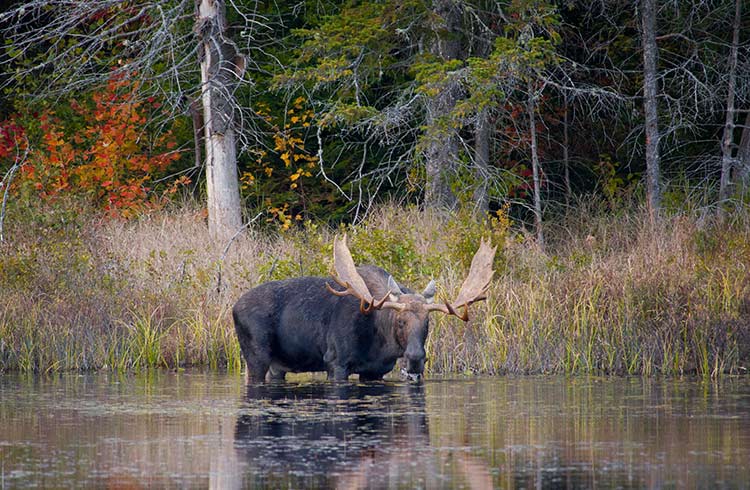
Maritime Quebec: beluga whales & gannets
Wide and deep, the St. Lawrence River near Tadoussac boasts as many as 13 whale species between May and October, including a large population of belugas as well as humpbacks and blue whales.
Off the Gaspé Peninsula, Bonaventure Island has one of the world’s largest colonies of northern gannets. Boat tours with time ashore operate from Percé.
In the peninsula’s interior, the heavily forested Chic-Chocs Mountains offer good chances to see moose.
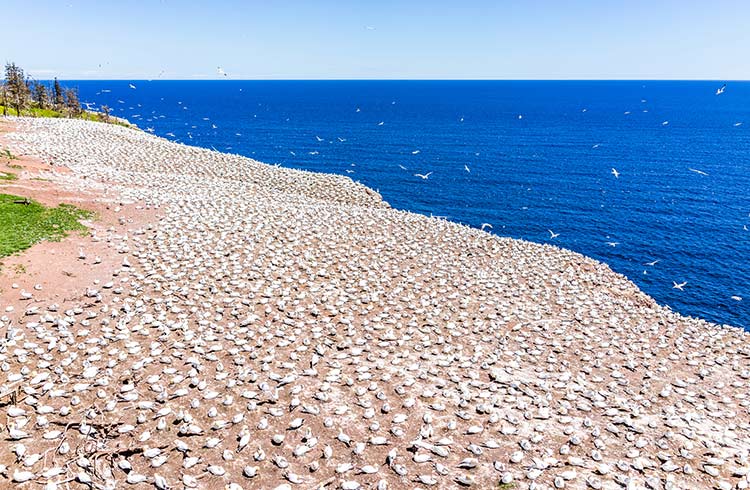
Bay of Fundy: whales & puffins
Between New Brunswick and Nova Scotia, the Bay of Fundy is famous for the world’s highest tides. Up to 12 whale species frequent the area, with humpback, fin, and minke whales the most common.
The bay is also a great birdwatching destination, with more than 260 species including puffins, eagles, and sandpipers.
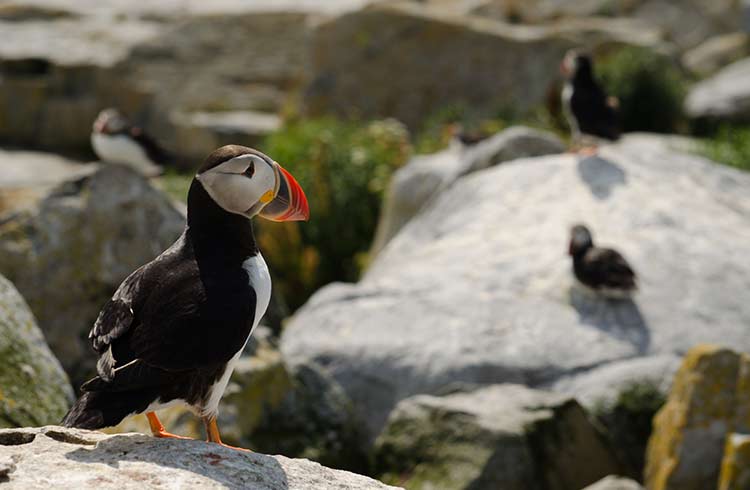
Newfoundland: more whales & moose
Newfoundland’s rich waters attract 22 species of whale including large numbers of humpbacks, along with minke, sperm, blue, orca, and pothead whales. Seabirds number in the millions, and include North America’s largest population of Atlantic puffins.
Gros Morne National Park has a dense population of moose, frequently seen along roadsides.
Wildlife safety
No matter where you choose to explore Canada's amazing wildlife, always take care to maintain a safe distance and avoid acting in any way that might disturb the animals or cause them to modify their natural behavior. Remember that wildlife is just that – wild – and do your best to ensure that it remains so long after your visit is over.
Related articles
Simple and flexible travel insurance
You can buy at home or while traveling, and claim online from anywhere in the world. With 150+ adventure activities covered and 24/7 emergency assistance.
Get a quote
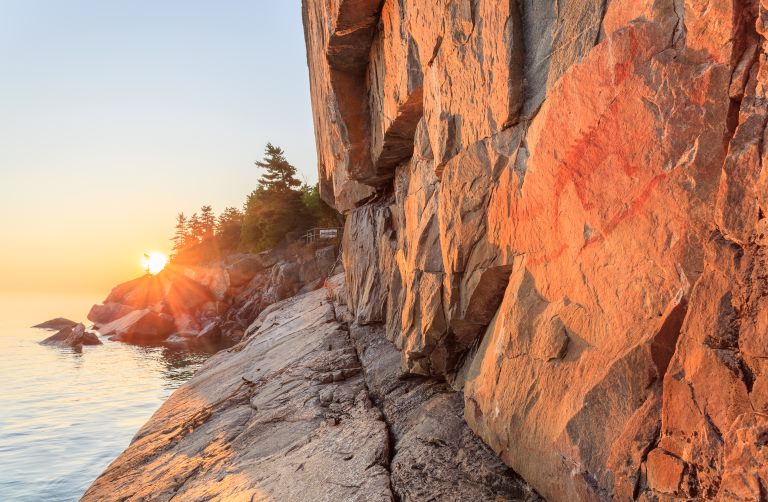
No Comments